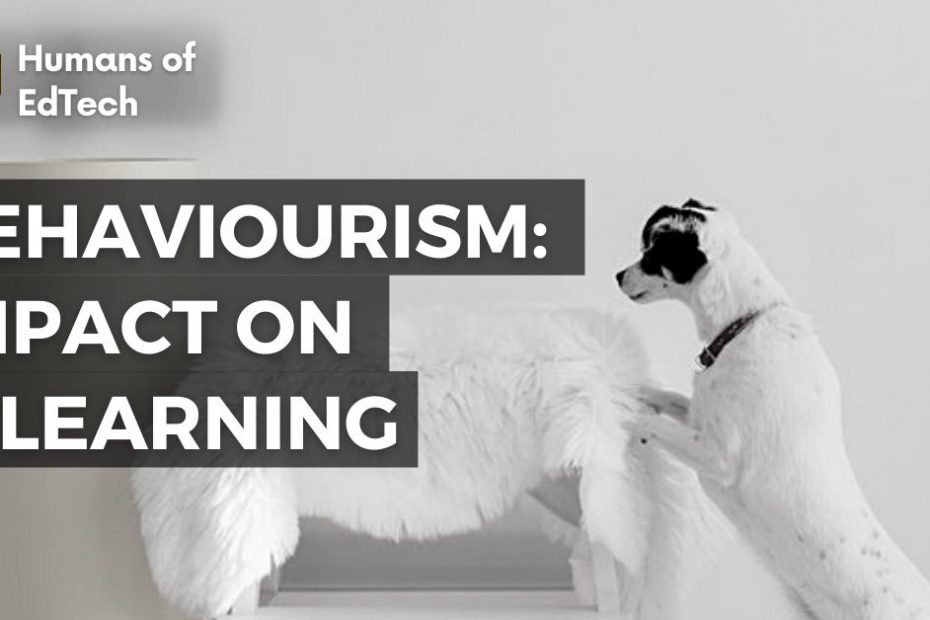Behaviourism is a well-organized way to understand the behavior of humans as well as of animals. So here we’re going to look at what is Behaviorism, how the Teaching Learning Process works with Behaviorism, and what is the Impact on e-learning and adult learning technology.
- WORDS:1247
- TYPE:Post
- VIDEO:1
- SLIDES:1
- TOPIC:Humans Of EdTech
- TIME:8 Minutes
Hello, and welcome once again to another episode of Humans of EdTech. And today, we are going to start discussing one by one, in this particular video, one school of thought with respect to education with respect to psychology.
So let’s quickly jump into this, we’re going to look at behaviourism and the impact that this particular school of thought, from a psychology perspective has had its impact on the EdTech as a field education and as a field of teaching.
So let’s get started. What should you expect today, you should look at understanding what is behaviourism, how the teaching learning process works over here, impact on elearning, and specifically, impact on adult learning and specifically how the grownups take to it in the online environment and the more contemporary part of it.
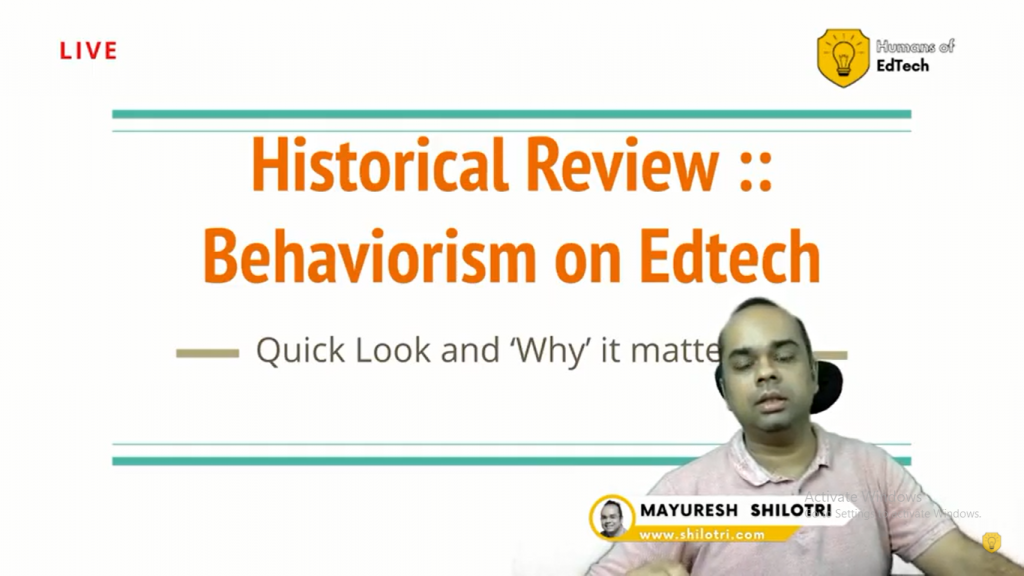
Why does behaviorism matter?
So what is behaviourism? I’m sure you must have all heard at some point in time about Pavlov’s dogs, Ivan Pavlov. Essentially a very well established name in the psychology field, came up with an experiment where every time he had a bell that was ringing, bone was presented to the dog and the dog would start to salivate, slowly but surely they took the bone away, the bell was ringing and the dog would yet salivate the dog kind of had established in his mind, a causal relationship between the bell ringing the bone coming to him and him starting to salivate, which is nothing but a biological response.
So that at it’s very simple heart and core is what behaviourism is all about. Again, these are the people who have done a lot of work in Watson, Skinner and Paolo, they have propounded proposed written extensively about different specific sub schools methodologies in behaviourism, they will what you call as behaviourist, psychologist and they have done a much larger, they have left a very large body of work.
I encourage you to have a look at it. But again, I’m just going to touch on behaviourism, and specifically the impact on the teaching learning part of it. So quickly jumping on this behaviourism is where all the behaviours that are acquired via conditioning, this is a word that you’re going to hear again and again.
Now the key thing to note over here is the behaviour that is observable, something that you can see, from an external perspective from outside it is observable, something that is an internal state or stage of an individual is not something that is explicitly modelled or considered over here, emotions, moods, everything is kind of subjective.
So now let’s look at this, how is this going to impact. So behaviours are influenced, are driven, are modelled on the basis of certain external stimuli. So that’s what this particular thing essentially says. And essentially a lot of background, journey perspective is kind of cut out.
So behaviourism is possibly one of the introductory schools of thoughts, which definitely has a lot of applications. But this is essentially the broad outline, I don’t want to get too deep into this, but this is what we are looking at.

How does the teaching learning process work?
Quickly jumping ahead. So how the teaching learning process works. So there is a stimulus, because of that particular stimulus, there is a response that happens. And if you give the stimulus again and again, the response will come again and again.
And by conditioning by memorization by internalising, you will essentially get this particular thing I’m sure you’ve seen a lot of these things at different points in time, what we typically call as reinforcements.
So, if you do something that is desirable, you get positive reinforcement, you essentially get some sort of prize, you essentially get some sort of encouragement. So that is the positive reinforcement or if you do something that is not desirable, you essentially get what is a negative reinforcement. So these can be called punishments.
I don’t think I’m offering a 100% clear, or a very classical definition. A Wikipedia article is going to give you like two level decision trees over here. But this is what we’re talking about. We’re talking about encouraging things which are right and asking the interviewer to do more of it and discouraging them from not doing what is not desirable.
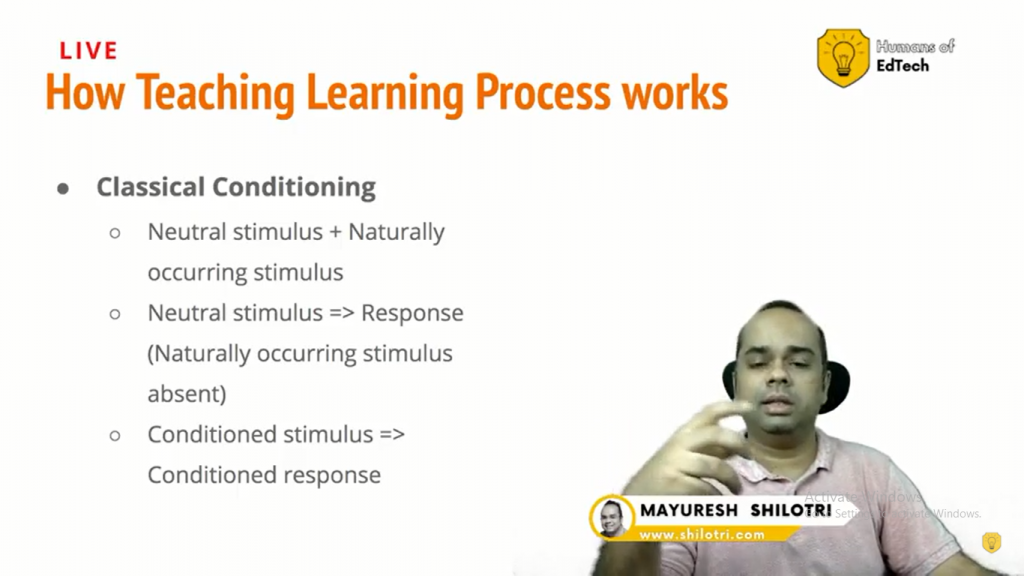
What are its strengths and weaknesses?
In a nutshell, it focuses on the observable, measurable outward behaviour is definitely scientific and replicable. The dog is a testimony to it absolutely. This is very well used for modelling the behaviour of the people online/offline in all sorts of environments.
Of course there are certain things that this particular school of thought chooses not to look at that is with respect to biological influences so on and so forth which we will look at in the upcoming sessions. How does it impact the learning component? The elearning component definitely anything that has not been internalised by doing it again and again by developing a muscle memory it has to be a function of repetition.
So this is something that is at play subliminally if you want to have the gamification part of it which is basically encouraging or discouraging people from doing specific things you’re definitely using behaviourism at some level, quiz, measurement giving people the feedback positive recognition all of these things use behaviourism in some form or the other.
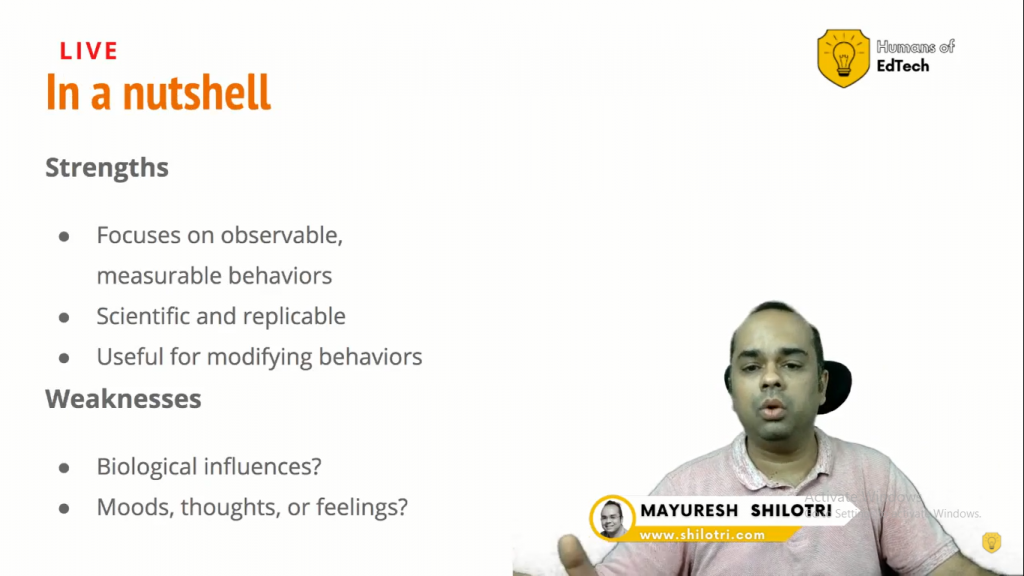
Which techniques to use?
There are specific techniques that people use with respect to the behaviourist psychology so now coming to the specific interfaces if you’re doing classification if you’re putting all the squares in one bucket and all the circles in another bucket and you improve doing some sort of online drag and drop environment whether it is a tablet or an online interface you’re actually using discrimination technique over here. And that again comes from the behavioristic psychology behaviorism school of thought.
So whether you are doing a project which has five steps that are involved and you do all of them successively and all of them leads to completion of projects and chaining five assignments to complete one project that again comes from this particular school of thought.
A lot of these things essentially what you see in your world outside all the elearning platforms LMS’s have different features, have their impact, have their basis in behaviourism.
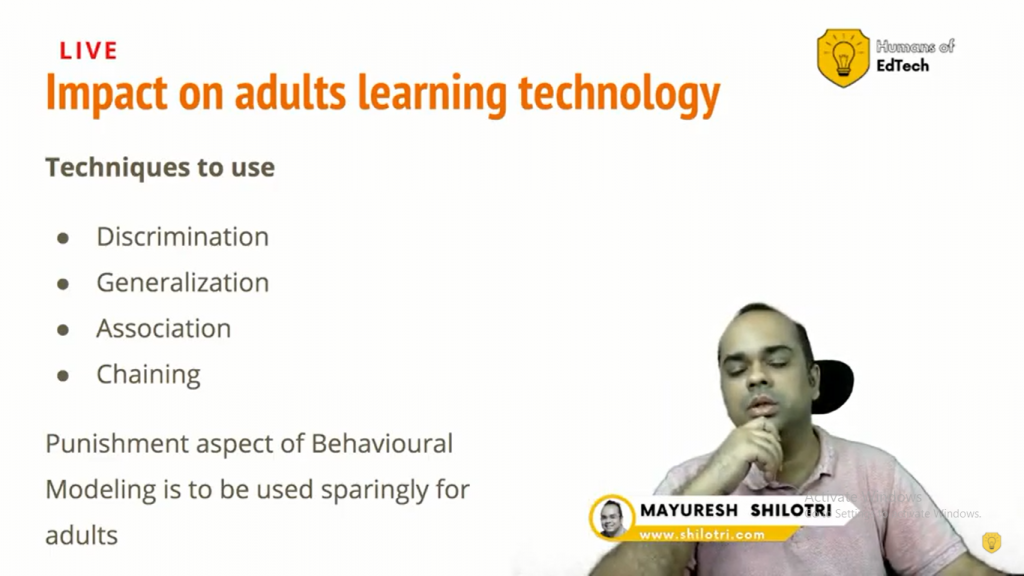
I hope this serves out as a very gentle introduction to what behaviourism is. This is a topic that can be discussed for at least half a semester course.
I just wanted to do over here to introduce to you what is behaviourism as a school of thought and its impact on the teaching learning methodology in the modern EdTech online space especially in the higher end where you’re talking to a lot of grown up learners.
I hope this answers some part of it. Stay tuned we are going to look at at least four other schools of thoughts after this particular session. You don’t want to miss this. I’ll see you soon follow us on our web Shilotri.com, that’s right here and also on Linkedin. Bye
Photo by Karolina Grabowska from Pexels.
Join to get sneak peek into what's happening
I write about books, experiences, product, UX, EdTech, early stage growth, validation – mostly tech. Subscribe if these topics interest you. Once every 15 days emailer. I promise – No spam. (I am known for it otherwise) 😉
